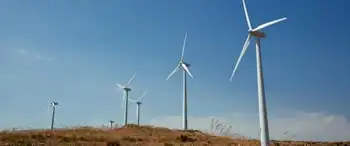Lack of transmission lines restricts wind power
By The Texas Tribune
Electrical Testing & Commissioning of Power Systems
Our customized live online or in‑person group training can be delivered to your staff at your location.

- Live Online
- 12 hours Instructor-led
- Group Training Available
The lack of transmission lines — and the relatively low price of natural gas — has thwarted the ambitions of wind-power advocates to expand the use of this alternative energy source in Texas. The oilman T. Boone Pickens, for example, bet heavily on wind a couple of years ago, ordering hundreds of turbines and announcing plans to build the world’s largest wind farm in the Panhandle at a cost of up to $12 billion. He later scaled back, canceling some of the turbine orders, giving up his land lease and saying he was looking elsewhere to build.
To encourage others, the state is moving forward on a contentious project to erect $5 billion worth of transmission wires to connect the turbines to the cities that need power. Recently, state regulators met in Austin and approved the route of a controversial line that will run about 140 miles through the Hill Country, one of the stateÂ’s most scenic regions.
Construction of the line — a project of the Lower Colorado River Authority that will run from Schleicher County to a substation near Comfort — should start next year. Last year, vigorous opposition, by landowners, wealthy newcomers and old-time families, succeeded in derailing plans for another line that the state had wanted to build through the area. Instead, the existing electric infrastructure will be upgraded to carry a greater load. The Public Utility Commission, which is overseeing the process, has also canceled plans for an additional segment of the Hill Country line discussed at a recent meeting.
"All Texans love their land," Barry T. Smitherman, the commission chairman, said in an interview a few days ago. During the process of planning the routes for transmission lines, Mr. Smitherman said, “we didn’t please everyone, but I think with each of these we really tried to work hard to make it as acceptable as possible for the landowners.”
Texas embarked on the transmission line project, known as Competitive Renewable Energy Zones, several years ago. The need was clear: in West Texas, home to the vast majority of the stateÂ’s wind farms, so many turbines have been built over the past decade that some must be shut down during windy periods because there are not enough wires to transport the power. Texas is the leading wind-power state by far, with nearly three times as much capacity as the next-closest state, Iowa. Once built, the new lines are expected to span more than 2,300 miles.
The Hill Country is not the only part of Texas where resistance to new power lines has been fierce. Landowners near Palo Duro Canyon State Park in the Panhandle also put up vigorous opposition. Their arguments against one of the proposed lines prevailed, so it will be built elsewhere and not cross the dramatic canyon landscape. Nonetheless, another line could still go across the canyon. Residents of Denton County, north of Fort Worth, worry that a proposed line could cross landmarks like a park area called the Greenbelt or a Girl Scout camp.
The utilities building the lines can take the land by eminent domain as a last resort, if they and property owners cannot agree on a price for an easement on the land. That would probably be a very unpopular move. Gov. Rick Perry, who appoints the commissioners, just declared that strengthening private property rights was a “legislative emergency” for state lawmakers to take up as soon as possible.
Catherine Frazier, a spokeswoman for the governor, said in an e-mail that Mr. Perry “supports efforts to build the necessary transmission network” to aid wind power’s development.
“He expects utilities to use existing rights of way when possible and look at options to minimize impacts to private landowners,” Ms. Frazier said.
The utility commission has completed its work on many of the routes, Mr. Smitherman said, and all of them should be decided this spring.
The process of choosing routes for the various lines has been a minefield for the three commissioners. Besides landownersÂ’ concerns, the commissioners hear testimony about endangered species habitats, airports, military bases, rivers and many other topographical or cultural features that could pose conflicts. Their task is to devise routes that will do the least damage and contain costs, which will be passed on to ratepayers.
Once all the lines are built, they will nearly double the amount of wind-energy capacity in Texas. Last year, wind supplied the Texas power grid with nearly 8 percent of its electricity. The rest of the country averages about 2 percent.











